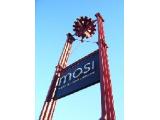Museum of Science and Industry - Manchester
| |||||||||||||||||||||||
Located on the historic site of the world’s oldest surviving passenger railway station, housed in five listed buildings, MOSI’s amazing galleries and outstanding collections tell the story of Manchester’s scientific and industrial past, present and future. MOSI is a fascinating and fun day out for all the family. Located on the historic site of the world's oldest surviving passenger railway station, housed in five listed buildings, MOSI's fascinating galleries and outstanding collections tell the story of Manchester's scientific and industrial past, present and future. Here are just some of the many exciting things to see and do at MOSI. In fact there is so much going on that one trip might not be enough! Have fun in Experiment! - our great hands-on science centre! Admission: Free! Charges apply for special exhibitions Discount entry is available for pre-booked groups (10+) to special exhibitions. Under 5s receive free entry to special exhibitions. Permanent galleries are free to all Opening Times: Open every day except 24 and 26 December and 1 January 10am to 5pm. the Museum's site is the fomer Liverpool Road Station, which was the original Manchester terminus of the Liverpool & Manchester Railway. This was the first railway built to carry passengers as well as goods. Its opening in 1830 heralded the dawning of a new age of passenger transportation - steam rail travel. In trials held at Rainhill in 1829 to select a locomotive design for use on the Railway, Stephenson's Rocket won. George and Robert Stephenson soon developed the improved Planet class of locomotives. Our reproduction Planet locomotive provides train rides at advertised times - check the What's On section for details. Calculating and ComputingCount Manchester's number-crunching innovations, from the specialist slide rule to the birth of the Baby and beyond. Scientific InstrumentsFrom microscopes to mass spectrometers, examine the instrument trade that supported local scientific research.Scientific ResearchWhich Manchester scientist, known as the father of modern chemistry, was colour-blind? Find out here. | |||||||||||||||||||||||
